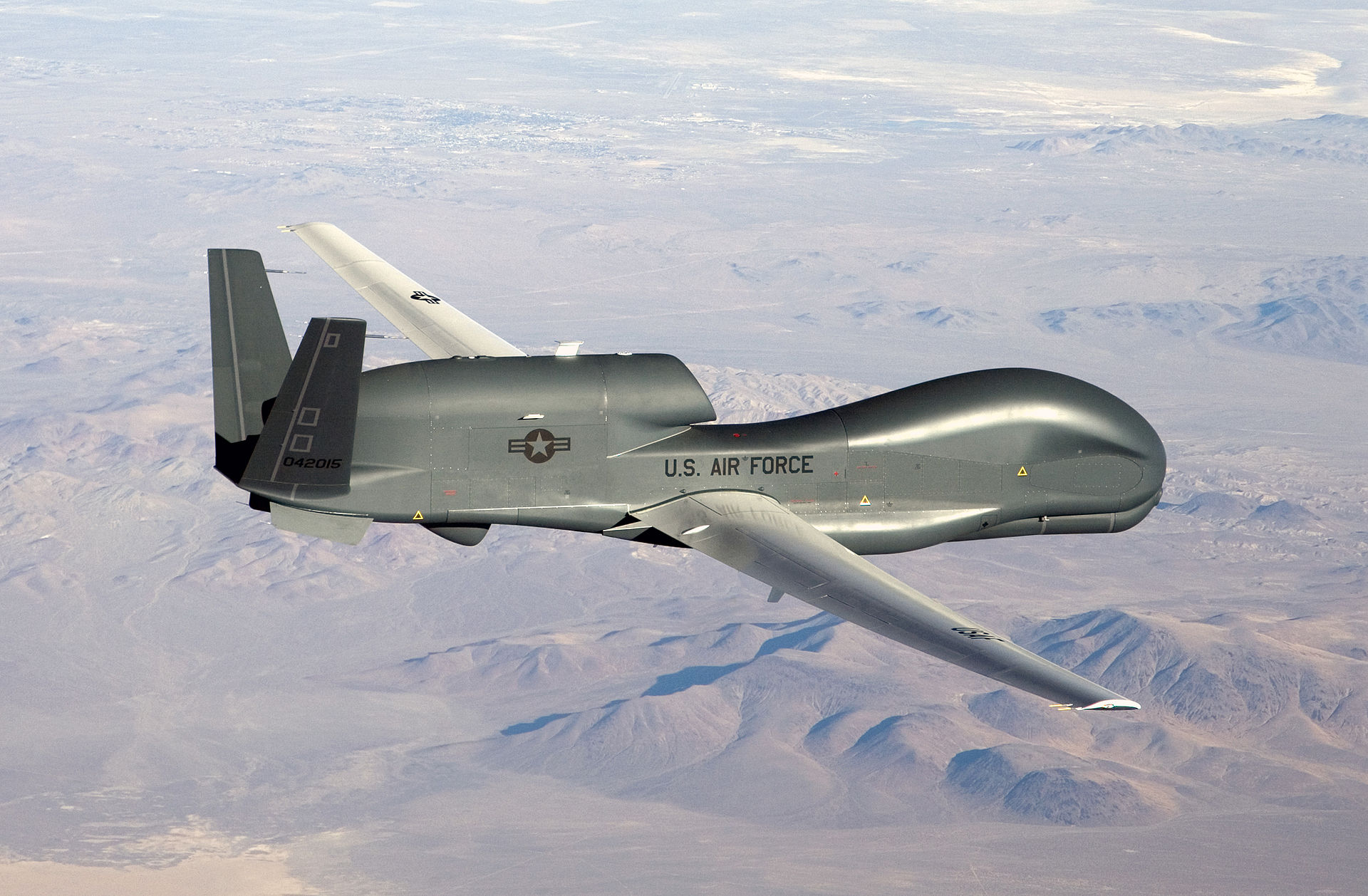
So Iran shot down a US Navy Global Hawk surveillance drone in the Strait of Hormuz June 20, with the two sides at odds over whether it was within Iranian airspace. Trump now tweets that he was on the verge of ordering retaliatory strikes on Iranian bases when he called it off the following day due to concern about the likely death toll of some 150. We are again expected to believe that Donald “bomb the shit out of ’em” Trump is a hippie pacifist at heart. The same guy who just weeks earlier vetoed a Congressional resolution calling for the withdrawal of US military forces from Yemen, and whose bombing campaign against ISIS-held territory in Syria and Iraq jacked up an horrific toll in civilian casualties.
This last massive war crime was so invisible to the outside world that even the New York Times writes that Trump’s contemplated Iran strikes “would have been the president’s third military action against targets in the Middle East.” This is a reference to Trump’s two sets of air-strikes on Assad regime targets in response to chemical attacks in 2017 and 2018. These raids on regime airfields claimed few if any civilian casualties. Meanwhile, the cities of Raqqa and Mosul can be virtually destroyed by US air power, and it’s like it didn’t even happen.
Trump’s supposed turn-around on the Iran strikes should come as no surprise. The writing was already on the wall. On the same day the drone came down, he was already equivocating about whether the Islamic Republic’s brass had really ordered the hit, obviously seeking a way to let Tehran off the hook. “I think probably Iran made a mistake—I would imagine it was a general or somebody that made a mistake in shooting that drone down,” Trump told reporters at the White House. (Middle East Eye)
Despite the inevitable Gulf of Tonkin invocations in places like The Intercept, we think both Washington and Tehran are playing a game for public consumption here rather than earnestly wanting to go to war. Now, certainly brinkmanship (even when performed as a ritual spectacle) is a dangerous game. (Nobody wanted war in 1914 either, famously.) But, as we’ve argued before, both sides have too much invested in common interests in the region to really want war with each other. The US and Iran are at odds in Yemen, but essentially allied in Iraq and Syria—both fighting ISIS and other Sunni militants. In Iraq, the alliance is nearly de jure, as both Washington and Tehran are closely backing the Baghdad regime.
This does leave open the question of who has been carrying out the attacks on tankers in the Strait of Hormuz and Gulf of Oman—which the US blames on Iran, and Iran denies. Strangely, nobody has thrown suspicion on Yemen’s Houthi rebels, even though they just sucessfully launched a missile strike on Saudi Arabia’s Jizan airport. (Al Jazeera)
The Houthis, while backed by Iran, may not be acting with Tehran’s approval. And if we must entertain “false flag” theories, the Saudis may be more likely suspects than Washington. The Saudis and Houthis are already at war, and may feel they stand to gain from a decisive escalation. Their respective sponsors, Washington and Tehran, have other considerations. It may be a case of “let’s you and him fight.” And Saudi Arabia doesn’t “wag the dog” (any more than Israel does).
Whatever isolationist-versus-neocon intrigues may be going on in the Beltway (with John Bolton obviously the top exponent of the latter camp) our money is on the “pragmatists” here. We’ve always been skeptical of the endless predictions of an imminent US attack on Iran (going back more than 15 years now). The mere fact that Tehran had the confidence to shoot down that drone (regardless of whose airspace it was in) points to this all being a game, in which both sides are at least unoficially conniving. It isn’t that either Trump or the ayatollahs are peaceniks. It’s just that they want to be able to wage their mutual wars in Iraq and Syria without the encumbrance of being at war with each other.
Photo of Global Hawk drone via Wikipedia




